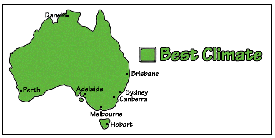Dwarf Oleander
There are few plants which grow almost everywhere in Australia. The humble oleander (Nerium oleander), is such a plant and it is also one of the most useful of all garden plants.
If pruned correctly the oleander can be a magnificent plant, its dense foliage providing privacy where many other plants could not survive. Even on a very busy city road these plants can make a colourful screen against both noise and visual pollution. As it is dense but not woody it is also an effective road-side barrier as it should slow down a crashing car.
Adaptable
Oleanders are adaptable to a wide variety of growing conditions, from the salty winds of the seaside, to dry, sandy desert soils, and wetlands. They can be grown just about anywhere in Australia, preferring a well-drained, sunny position. They will manage to grow well in dry soil but cannot tolerate very wet conditions, although they like plenty of water during their main growing and flowering times.
They have a long flowering season, (summer to autumn) and a wide range of colourful varieties. The most common colour is pink, although there are also red, white and apricot flowers.
Dwarf oleander varieties
There are now dwarf varieties of oleanders which grow to about 1-1.5m (3′-5′) tall. These shrubs flower for most of the year and come in pink, red and apricot colours.
- Nerium oleander ‘Apricot Form’ – new dwarf variety with apricot coloured flowers
- Nerium oleander ‘Pink’ – dwarf variety that flowers pink
- Nerium oleander ‘Cherry Surprise’ – red flowering dwarf oleander
Cost and availability
Dwarf oleanders are available throughout Australia with the exception of Tasmania and there are limited supplies in New South Wales.
Our segment was filmed at Tim’s Garden Centre, Mount Annan Drive, Mount Annan, NSW, 2567. Phone: (02) 4647 3788. The dwarf oleander ‘Apricot Form’ starts from $8 for a 15cm (6″) pot.
Is it safe to plant?
Some people believe oleanders should not be grown in gardens because they are poisonous. This is a misinformed belief. Whilst oleander (Nerium oleander) is poisonous, it is no more dangerous than many other garden plants. In general, the stories about poisoning from the plant have been found to be myths. Indeed, records from the Poisons Information Centre suggest that there have been no serious injuries or any deaths attributed to oleander (Nerium oleander) in Australia. Oleander poisoning is caused by glycocytes, which need to be ingested by chewing large quantities of leaves, flowers or fruit. The plant has a bitter taste and large quantities of leaves would need to be ingested to effect poisoning. The bitter taste would also be likely to deter most children before any danger was done. Nevertheless, take care when handling this plant. It is poisonous and shouldn’t be under-estimated.
Poisons Information
For information on oleander poisoning, or for instructions if poisoning is suspected call Poisons Information on 13 1126. This is a national service, which operates from the New Children’s Hospital at Westmead, New South Wales. It can be dialled from anywhere in Australia.



